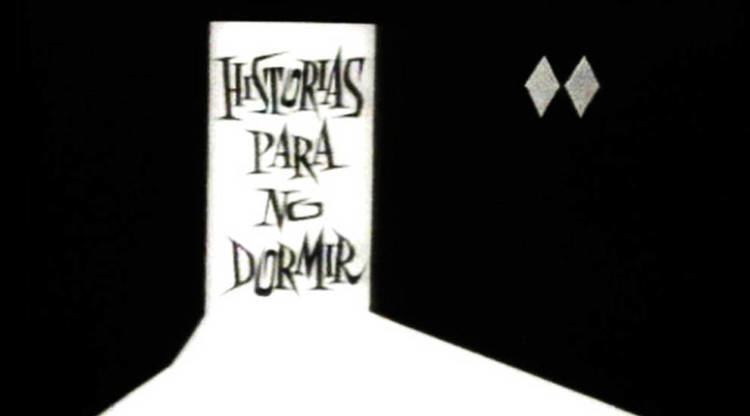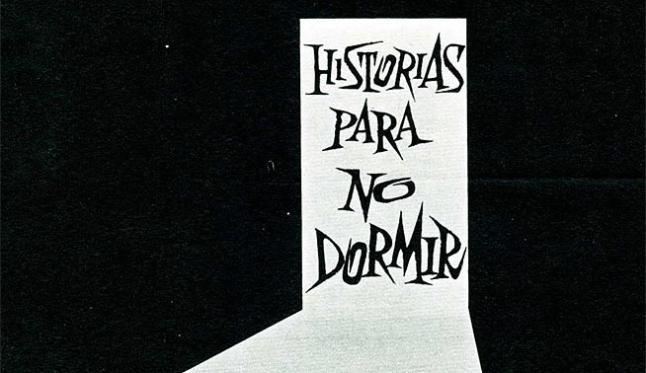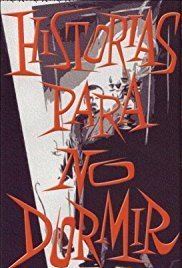7.8 /10 1 Votes
7.4/10 FilmAffinity Original language(s) Spanish First episode date 4 February 1966 | 8.1/10 IMDb No. of seasons 3 Final episode date 27 September 1982 Language Spanish | |||||||||||||||||||||||||||||||||
 | ||||||||||||||||||||||||||||||||||
Written by Narciso Ibáñez Serrador Directed by Narciso Ibáñez Serrador Genres Horror, Mystery, Drama, Science Fiction, Crime Fiction Similar Un - dos - tres responda, Black Octopus, Curro Jiménez, Anillos de oro, Este señor de negro | ||||||||||||||||||||||||||||||||||
Historias para no dormir el televisor trastorno obsesivo compulsivo
Historias para no dormir (English: Stories to Stay Awake) was a horror Spanish television series written and directed by Narciso Ibáñez Serrador, produced by Televisión Española and broadcast on its Primera Cadena from 1966 to 1982.
Contents
- Historias para no dormir el televisor trastorno obsesivo compulsivo
- El cumplea os historias para no dormir
- History
- Awards
- References

El cumplea os historias para no dormir
History

This series marked Narciso Ibáñez Serrador's rise to fame. He had already been working on TVE since 1963, directing several previous series like Estudio 3 and Mañana puede ser verdad, but this was the work that made him famous for the Spanish public. It covered a genre, almost unknown in Spanish cinema or television.

The first season was started with the chapter titled El cumpleaños (The birthday) on February the 4th, 1966. It was the only chapter filmed on 16 mm celluloid, since the rest of the series were recorded on VTR. It was an adaptation of a tale by Fredric Brown. The rest of the series saw original stories written by Serrador, like La alarma (The Alarm), or adapted screenplays from tales by Ray Bradbury, Edgar Allan Poe and others, in chapters like La espera (The Waiting Time), El cohete (The rocket) or El pacto (The Deal), the last one adapted from Poe's The Facts in the Case of M. Valdemar. Although the most important chapter of the first season was El asfalto (The Asphalt), winner of the Golden Nymph for the best script on the Monte-Carlo Television Festival. It was the first international prize ever won by Televisión Española.

The second season was broadcast from 1967 to 1968 and it only had 8 episodes: La pesadilla (The Nightmare), La zarpa (The Paw, version of W.W. Jacobs The Monkey's Paw), El vidente (The Seer), El regreso (The Return), El cuervo (The Raven, special episode dedicated to Edgard Allan Poe's biography), La promesa (The Promise), La casa (The House) and El transplante (The Transplant). The series would be abandoned when Serrador started filming his first full-length feature film La residencia.

After the end of the second season, Ibáñez Serrador planned a new series which would have been titled Historias para la noche (Stories for the Night) which would contain deeper more intellectual tales. A pilot episode was made in 1970 that would not be approved. Therefore, he made in 1972 a special Historias para no dormir chapter titled El lobo (The Wolf). In 1974, he would film another special broadcast, the first one in color, titled El televisor (The TV set). Then with the success of Un, dos, tres... responda otra vez and his second feature film, Who Can Kill a Child?, he would not get back to Historias para no dormir for years.

In 1982, Serrador starts the third and last official season of Historias para no dormir, which would only contain four color chapters. The chapters were Freddy, El caso del señor Valdemar (remake in color of first season El pacto (The Deal), with the same actors on the same characters 15 years later), El fin empezó ayer (The End Began Yesterday, remake of a chapter from a previous series, Mañana puede ser verdad) and El trapero (The Junkman). Since the budget was very low, all the chapters were recorded on video, and the crew only had 24 hours for each chapter, so the quality got damaged. This season did not have success and was cancelled after four episodes.
In 2000, a new season of Historias para no dormir was announced, and as a preview, El televisor was rebroadcast with a brandnew introduction by Chicho. That preview was the only thing that was known from that season, since months and years went by and the project was never made. Months later, on June the 8th, 2001, on an interview in the Spanish program Versión española which was to broadcast his movie Who Can Kill A Child?, Chicho said that the project was cancelled because he wanted new directors for each of the episodes, because he didn't want to direct all the episodes like he did in the past. Since he couldn't find directors interested in the project, he cancelled the season.
The series were released on DVD with a 6 disc pack with new introductions by Ibáñez Serrador. Later, in 2008 another pack with 2 more discs was released. In spite of this, the full series has never been released on DVD, mainly because many chapters are lost or missing on TVE's vaults.
In 2005, as an attempt to relaunch the idea, the series of TV Movies Películas para no dormir (Films to keep you awake) were shot. These TV movies were produced by Telecinco, directed by renowned directors such as Mateo Gil, Jaume Balagueró, Paco Plaza, Enrique Urbizu or Álex de la Iglesia and coordinated by Narciso Ibáñez Serrador himself, who also directed one of the movies, titled La culpa (Blame).
